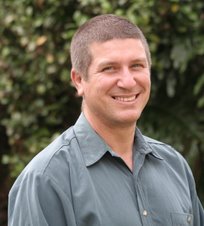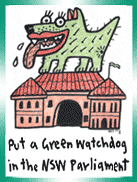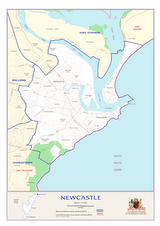Thoroughbred Horsebreeders support Greens cap on coal
For more than 20 years, The Greens have been urging the major parties to take the threat of climate change seriously.
Now, adding to the growing community support, the Hunter Valley thoroughbred horse breeding industry has called for:
● a moratorium on new mines in the HunterThis follows similar resolutions from Newcastle City Council and Gosford City Council and Singleton Council.
● a cap on coal exports from the Hunter Region
● an inquiry into the impacts of the coal industry on the long-term environmental, economic and social sustainability of the Hunter and other industries.
The full statement of the Hunter Valley thoroughbred horse breeding industry is reproduced below.

The Upper Hunter thoroughbred horse industry: Jeopardised by coal mining
A statement by the Hunter Valley Thoroughbred Horsebreeders Association and the Australian Horse Industry Council (Aushorse) March 2007
Thoroughbred horse breeding is a global industry, and the Hunter Valley is one of the top three major thoroughbred nurseries in the world, along with Kentucky, USA and Newmarket, UK. The Hunter established itself at the forefront of Australian industry more than 170 years ago.
The Hunter Valley thoroughbred breeding industry has risen to international prominence because of multi-million dollar investments, particularly in major upgrades of bloodstock that has made leading international sires available in the Hunter that also stand in the best studs of America, Japan, Britain, France and Ireland. The Hunter is home of many champion horses, with three-times Melbourne Cup winner, Makybe Diva, just one of them.
There are 77 thoroughbred stud farms located in the Hunter Valley. With an Equine Research Centre and equine-related education facilities through TAFE NSW, the Upper Hunter equine cluster is a major component of the local economy. The Hunter equine cluster has a close relationship to other Upper Hunter industries, particularly winegrowing and tourism industries, both of which have indicated investments made in their industries are threatened by coal mine expansion.
The equine industry in the Hunter Valley continues to expand, going against the trend of a general slowing in economic conditions in the Hunter in 2006 . Because of its location the Hunter breeding industry is becoming a major centre of investment for the booming Asian racing industry, with average prices for Australian yearlings rising dramatically by over 130 percent in the 10 years during the 1990s.
The Hunter Valley thoroughbred breeding industry has spoken out strongly against the expansion of coal mining in the Upper Hunter, concerned that the scale of proposed expansion of new coal mines in the Upper Hunter threatens prime agricultural land, jeopardises hundreds of millions of dollars of investments, the jobs of thousands of people and the rural quality of the Region.
Water and climate change are linked critical issues affecting the thoroughbred industry. Some horse studs have direct access to water, for example from Glenbawn Dam, but the coal and coal-fired power industry has the potential to suck the whole Hunter Valley dry. There is a positive feedback loop of coal, global warming and drought, shown by CSIRO in its study of the dairy industry in the Hunter, as a potential cause of losses of stock due to heat stress as temperatures rise and the climate dries out.
The horse breeding industry needs quality grazing land in a pleasant environment with reliable water and clean air. The scale of coal mining in the Hunter, and the number of new mine proposals and mine extensions has reached such an extent that the sustainability of the Hunter thoroughbred industry is threatened and an industry that is an historic part of the Hunter’s beauty and diversity may be forced from the area.
The Hunter Thoroughbred Breeding Industry
● Approximately 10,000 thoroughbred horses were sold in Australia through public auctions alone in the first 6 months of 2006.Total value of thoroughbred horses in the Hunter Valley
● The total turnover for these was in excess of $430 million.
● Of that $430 million, over half, $222 million, were horses from the Hunter Valley, sold from Hunter Valley vendors.
● Over 60% of thoroughbred studs in the Hunter Valley sell to international clients from both hemispheres.
● In a survey carried out on the top 120 thoroughbred stallions in Australia in the 2006 breeding season, 51% of the total Australian thoroughbred broodmare population was mated to stallions in the Hunter Valley.
● Australia has the second highest thoroughbred breeding population behind the USA.
● A total of 2752 race meetings were conducted in Australia during the 2005/2006 season.
● Total prize money was $414 million placing Australia 3rd behind the USA and Japan.
● Betting turnover for thoroughbred racing was $11.67 billion.
● Direct employment on the 77 Hunter Valley thoroughbred studs is increasing, having risen dramatically from 560 in 2000 to 1,065 in 2006. Thousands of other people are employed indirectly in the Hunter thoroughbred industry, as growers of lucerne, horse transport, equipment providers and maintenance.
● 60% of full time employees and 14% of part time employees live on properties where they work.
● Annual expenditure on wages by local studs is estimated at $25.8 million in 2006.
● Studs spent an estimated $246.2 million in 2006 (at least 90% of total estimated expenditure) with organisations within the Hunter Valley region, a 400% increase compared to $51.6 million in 2000.
Thoroughbred horses owned by Hunter Valley Studs: $267.6m (2000) $757.8m (2006)
Thoroughbred horses owned by other interests: $444.1m (2000) $894.8m (2006)
Total: $771.7 m (2000) $1.65 billion (2006)

Expansion of mines into thoroughbred breeding and wine growing areas of the Upper Hunter. Twenty mines occupy prime agricultural land of the Hunter River, and new mines or mine expansions are proposed in the yellow area (Courtesy: University of Newcastle EcoHealth Research Group at SELS project)
Local sustainability is threatened
The Hunter Valley thoroughbred industry provides an international profile to the Hunter Region which attracts high value investors from Australia and internationally and has been part of the Hunter landscape for over 170 years. Yet the scale of coal mining, and the number of new mine extensions and proposals has put a dark cloud over the future of the thoroughbred industry in the Hunter.
Most of the Hunter thoroughbred breeding operations were established when the scale of mining in the Hunter was much smaller and mostly concentrated in the Lower Hunter with only a few operations near Singleton and Muswellbrook. In the last ten years the scale of mining in the Upper Hunter has expanded enormously, particularly with the development of vast open-cut mines that cover many square kilometres. Large proposed underground mines using longwall technology pose potential threats to rivers and creeks and subsidence of land surface. New mines and new mine proposals have been proposed very close to thoroughbred breeding operations. Seven mine expansions and five proposed new mines are proposed.

Bengalla mine, one of the vast coal mines that have displaced thoroughbred breeding operations in the Hunter
Mining is a heavy industry activity, and vast swathes of the Upper Hunter have become virtual moonscapes as open cut coal mines at Mt Arthur, Bengalla and Wambo, and proposed mines at Anvil Hill., Mt Pleasant, Saddlers Creek and Moolarben flatten natural topographical features, damage creeks and waterways, increase salinity and dust, remove remnant vegetation and create huge walls of waste rock in close proximity to horse breeding operations. The dust, traffic and threats to water have forced some operators to relocate from farms they have occupied for generations.
The thoroughbred breeding industry relies on pleasant rural ambience to attract investors and buyers It co-exists with local grazing, dairy farming and winegrowing to provide a very appealing rural ambience to the Hunter that attracts a growing number of domestic and international horse buyers and tourists to the Region. The Upper Hunter horse breeding industry, like the local winegrowers, need a critical mass of operators to maintain recognition, investment, research and visitation. The expansion of coal mining into the Upper Hunter is jeopardising this critical mass, as winegrowers, horse breeders and farmers are being displaced by mining. These people are a fundamental part of the Hunter’s local history and culture, with many families having lived in the region for generations.
Drought and water quality are becoming a critical issue in the Hunter. Research on the impacts of climate change in the Hunter indicates there will be hotter drier conditions which will make water a limiting and increasingly contested resource. The average amount of water licensed to thoroughbred breeding and lucerne growing farms is 378 megalitres per annum. Mines have the capacity to buy water allocations that might otherwise go to farmers, while at the same time having poorly researched impacts on river and aquifer health and salinity.
Balanced development is also needed to maintain the economic and social diversity and ecologically sustainability in the Hunter Region. Thoroughbred breeders and other agricultural land users in the Upper Hunter need balanced development to protect their businesses and to provide security for their investments. Some horse stud operators in the Hunter have already moved to other regions because mine expansion has puts their business in jeopardy.
Regarding Anvil Hill and mine expansion
The thoroughbred breeding industry, winegrowing and tourism industries of the Upper Hunter indicated their concerns about the proposed expansion of coal mining in the Region in submissions to the NSW Department of Planning regarding the Anvil Hill mine in October 2006. Key points in their submissions include:
The Hunter Valley Thoroughbred Horsebreeders Association
“The dust and noise from a mine the size of the proposed Anvil Hill mine will lead to a deterioration of the local environment and impact upon the health and welfare of surrounding communities”.The Upper Hunter Winemakers Association
“Water users on the Hunter River have recently had their allocations cut drastically…. This has led to the financial viability of some long-established farms being jeopardised. We simply cannot accept that at the same time, the Government can consider approving a huge new coal mine proposal….”
“The expansion of coal mines, including the proposed Anvil Hill mine, threatens the viability of [our] businesses and the families that they support to remain in the area”.
“We also implore you to initiate an inquiry into the broader issue of the expansion of the Hunter Valley coal industry, and the potential impacts of this on other industries and the region’s social, economic and environmental sustainability”.
“As much as the mining industry would like to believe that mining and wine tourism can co-exist, that is certainly not the view of the wine tourism industry… Many longstanding, sustainable agricultural enterprises will be displaced by this mine, impacting the existing communities and families that have, in some cases have been in operation for generations.”Upper Hunter Tourism Inc
“Water use by a mine this size is significant. Hunter River water users have recently had their water allocations reduced to 8% which will make some farms unviable and cause some farmers to leave the land. It is not acceptable that in this environment the Government is considering the approval of a coal mine with water use of this scale.”
“Our association would like to see further investigation into the cumulative impacts of any additional mining developments in the Upper Hunter with consideration given to the social, environmental and economic impacts on existing communities.”
“Our Board is in no doubt the establishment of the Anvil Hill coal mine will result in a severe negative impact on the area’s Tourism Industry and will serve to destroy the hard work and resources invested in the industry to date”.




